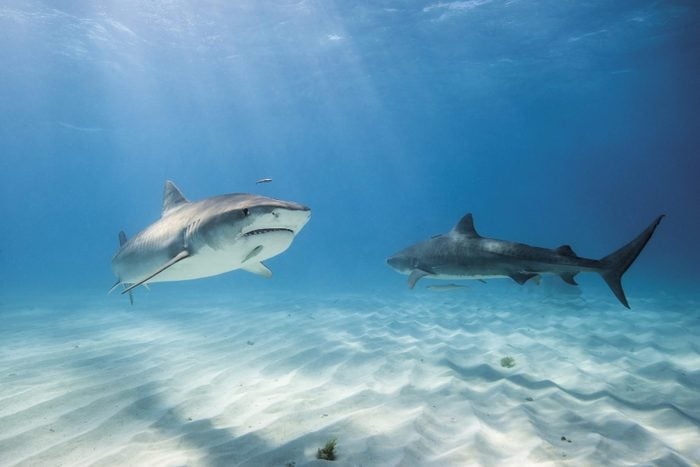
Interesting shark facts you may not know
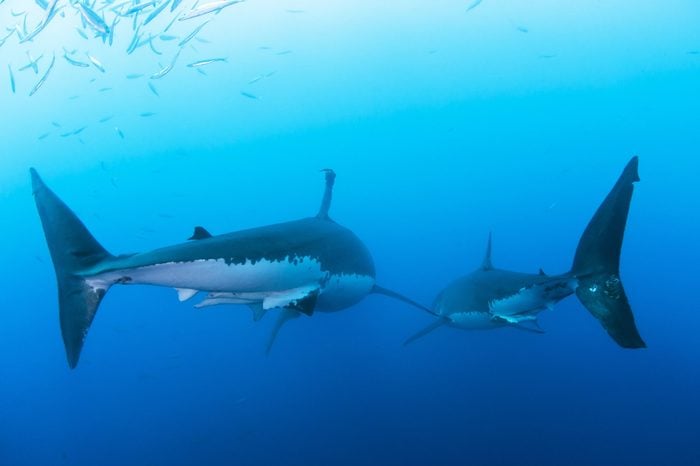
Female sharks have thicker skin
During the mating process, male sharks bite into the female to assume the proper mating position. Male sharks also have sharp spurs on their genitalia to lock in place when mating. Due to this unpleasant experience, females have adapted by growing thicker skin for protection. Looking for some shark-themed humor? Check out these fin-tastic shark puns.
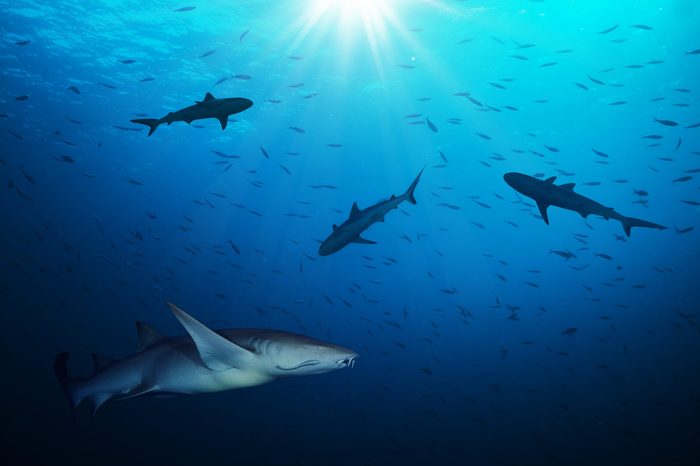
Some female sharks can reproduce independently
Talk about an interesting piece of animal trivia. After learning about the aggressive mating process, what female wouldn’t want to do it herself? Well, a few known species of female sharks are able to. This is called asexual reproduction, or parthenogenesis. This ability to reproduce on their own may prove valuable in the face of a declining shark population.
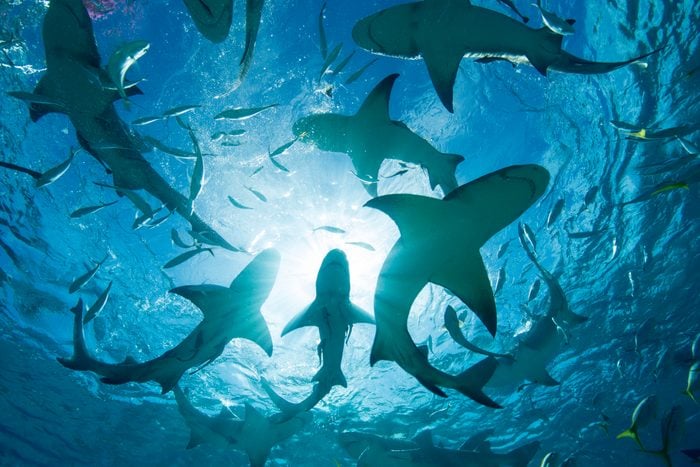
There are more than 500 different species of sharks
Here’s a fun animal fact: Among the more than 500 different species, there are sharks that can fit in your hand and sharks that reach up to 46 feet, according to the Smithsonian.
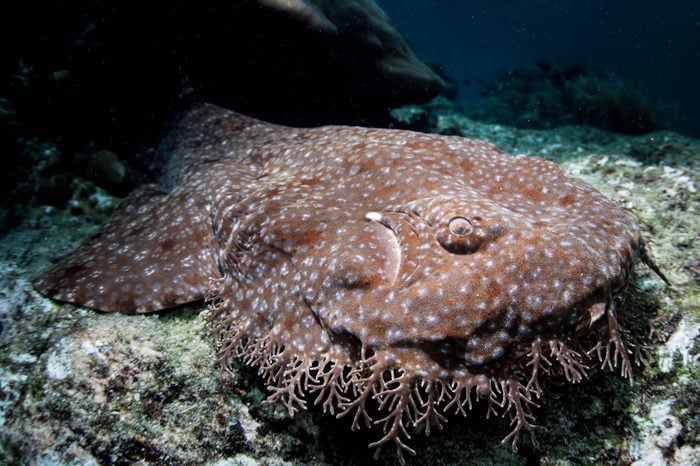
Some sharks have the funniest names
The tasselled wobbegong: the name of an eccentric Ikea carpet or a shark? Well, it’s a bit of both. This species is called the carpet shark because of it’s fringed, coral-looking body. The names of other species will give you a kick too: goblin, megamouth, Brazilian guitarfish.
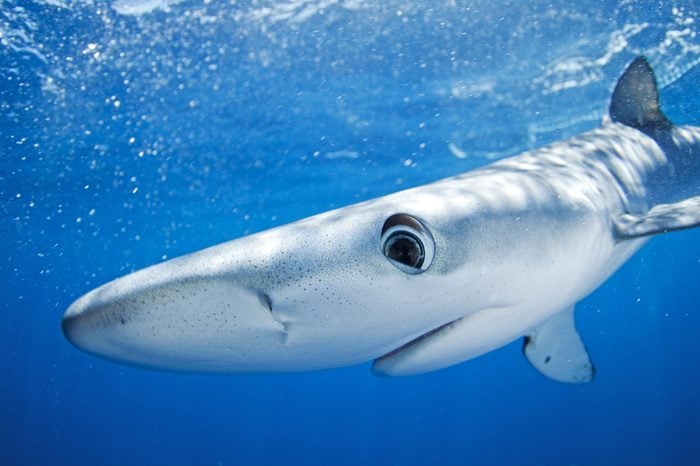
Sharks have electric senses
Like humans have black pupils, sharks too have a black spot on their eye, but their sense is much cooler. This organ allows sharks to sense electromagnetic fields and temperature shifts in the ocean. The upper snout of sharks is filled with a gel-like substance that’s electrically charged and allows sharks to sense their prey’s heartbeat.

Sharks coexisted with the dinosaurs
Scientists are trying to discover what character trait allowed sharks to surpass the dinosaurs, but fossil evidence shows that sharks have been kickin’ for a long time. About 450 million years, to be exact—the first fossil evidence dates back to the late Ordovician Period.
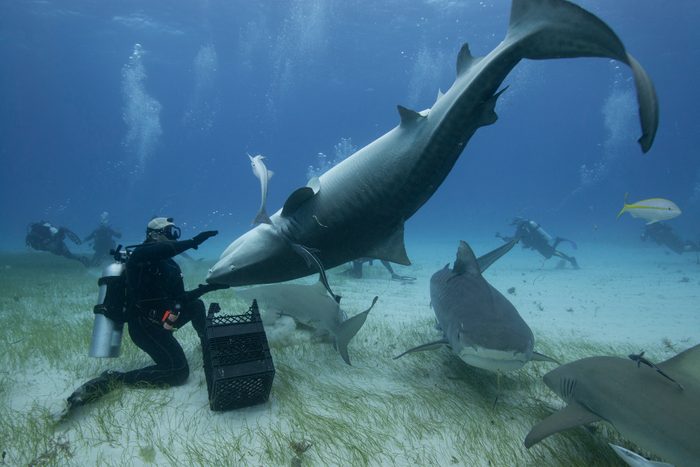
Sharks can become mesmerized
When flipped over, sharks go into a trance called tonic immobility. Researches use this tactic when studying sharks in order to get an up-close-and-personal look at them. “When the shark is gently turned on its back, it’s thought to disorientate them, causing them to enter the state,” said the Shark Trust. “The shark’s muscles relax and their breathing becomes deep and rhythmic.”
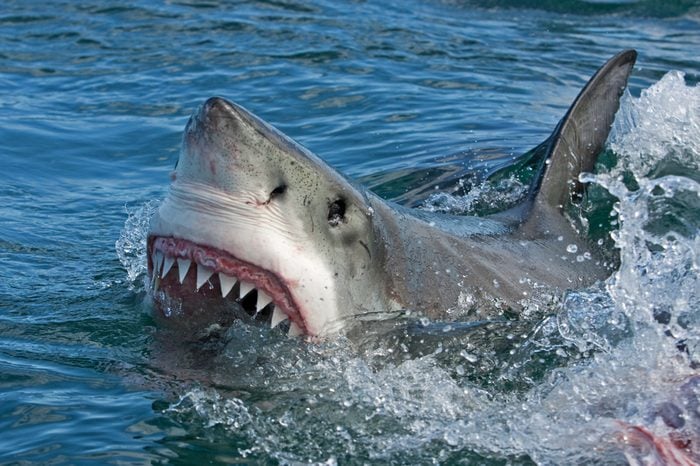
Humans kill more sharks than sharks kill people
Heard the shark myth that sharks kill more humans than humans kill sharks? Well, that’s simply not true. Sharks kill a handful of people per year across the globe, while humans kill between 75 and 100 million sharks. “The math on that is pretty simple,” says Nick Whitney, PhD, senior scientist at the Anderson Cabot Center for Ocean Life at the New England Aquarium, who first got interested in sharks as a kid in Michigan because the movie version terrified him.
Now that he studies them for a living, he’s no longer afraid to swim in the ocean. “I know what lies beneath now, and in some ways, that makes me much more comfortable,” he says. “Then again, if I see a lot of bait fish close to shore and birds actively feeding on them, I know there are probably bigger fish nearby as well, and there are likely to be sharks too.”
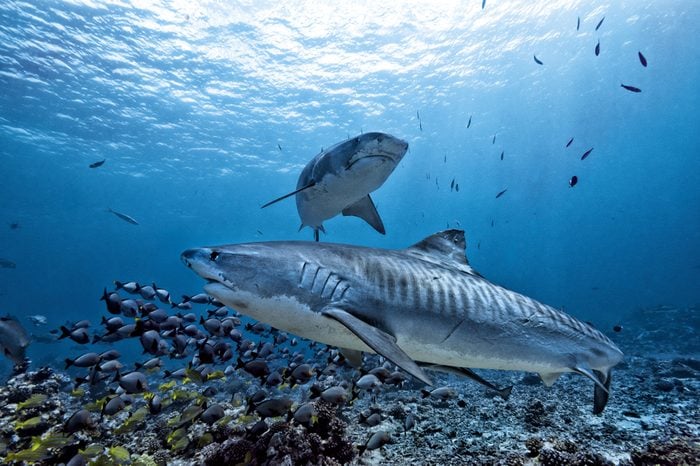
Only three shark species are responsible for most human bites and fatalities
Whitney says that of the hundreds of species of shark out there, bull sharks, tiger sharks and white sharks are the most dangerous, but even with those groups, most bites are inspired more by curiosity than animosity. “If any of these three species wanted to kill a human and eat them, it would be easy to do,” he says. “The fact that the vast majority of those bitten even by these three species survive, that’s a good sign it was an investigatory bite.”
Whitney has been bitten twice, but says both times he totally deserved it. “Most of the injuries I’ve sustained during shark work have come from other humans or slip-and-fall accidents on the boat.” In fact, these animals are deadlier than sharks.
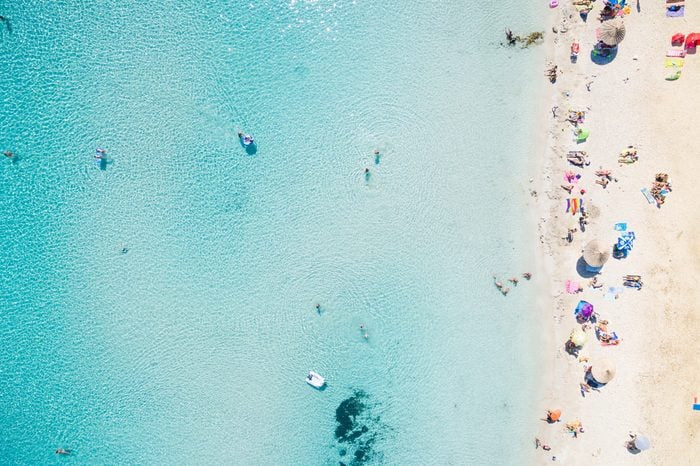
The U.S. sees more shark attacks than any other country, but very few fatalities
Most of the bites in the United States happen in Florida, but fatalities are rare. There was only one shark attack fatality in the United States in 2021. That same year in the U.S., sharks attacked 47 people without provocation.

Shark spotters make beaches safer for swimmers and sharks
Some places in Australia use overhead drones and helicopters to look for sharks near busy beaches, and in Cape Town, South Africa, human spotters put up flags on the beach and alert swimmers and surfers if a shark is spotted. “Shark Spotting has been a very successful program,” says Alison Kock, a marine biologist with South African National Parks. “Not only does it reduce the chances of sharks biting people, but it also provides essential ocean safety information.”

Other shark-protection methods can be lethal
Some places use baited lines to catch sharks near popular beaches so they can be killed, though this culling hasn’t proved to reduce the number of human fatalities. In other places, giant nets surround swimming and surfing areas, so sharks can’t approach, but most animals caught in the nets die—including not only sharks but also dolphins and sea turtles, some of which are threatened or protected species.
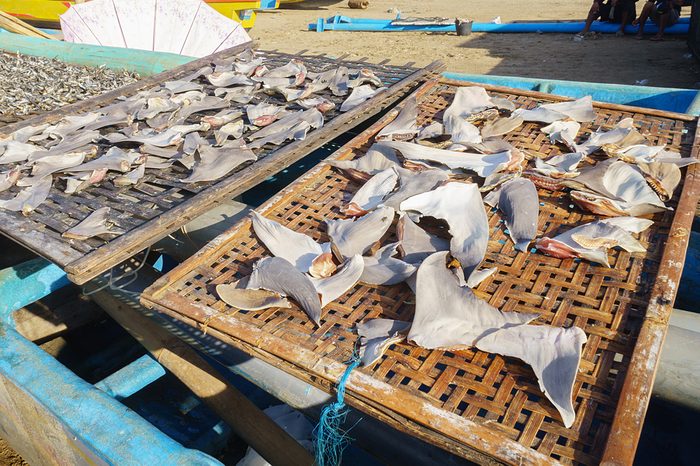
Sharks aren’t killed only to protect humans
Kock says humans pose a far greater risk to sharks than the other way around: “They are currently being killed faster than they can reproduce.” Overfishing—particularly, the cruel practice of cutting off fins (for shark fin soup) and then releasing sharks back to the water to drown—is responsible for most of the losses, but sharks also get caught accidentally by longlines and nets meant for other fish, according to the World Wildlife Federation. Whale sharks, one of the least threatening species to humans (they eat plankton), were listed as an endangered species in 2016.
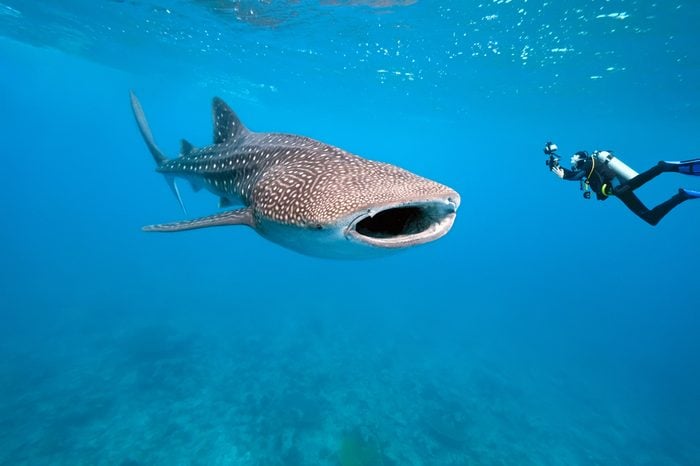
Whale sharks are the biggest fish in the sea
Whale sharks can grow as long as 40 feet and weigh more than 20 tons, which makes them about twice the size of most great white sharks. They do have teeth, but they don’t use them for eating. Instead, they feed primarily on plankton and shrimp, like filter-feeding whales; they open up their five-foot-wide mouths as they swim along and filter out all the food as it passes through their bodies. They aren’t aggressive toward humans, and many ecotourism operations promote SCUBA diving trips that allow people to swim with them.
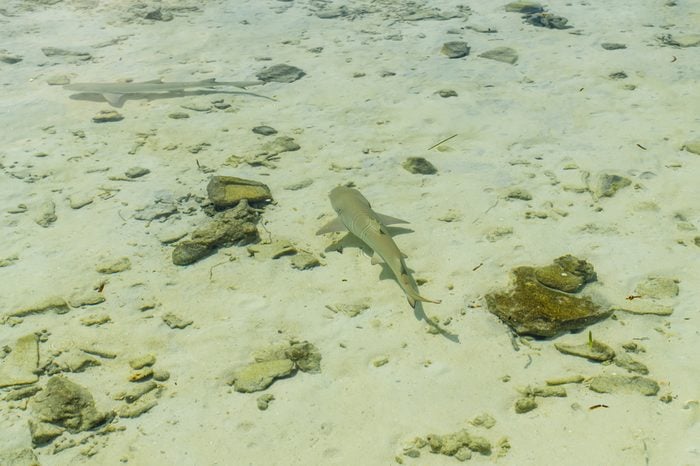
Sharks come in all sizes
Dwarf lantern sharks, which can fit in the palm of your hand, have been found in the Caribbean off the shore of Colombia and Venezuela, and are thought to live more than 900 feet below the surface, according to the Smithsonian Institution. They have photophores, organs that create light chemically, on their fins and bellies. The bioluminescence apparently helps camouflage them from predators looking up at them (making them blend in with the light from above the water) and attracts prey when they’re down in darker water.

Great white sharks are clever predators
“Sharks are smart,” says Kock. She points out that great white sharks show up every year to feed on a group of young Cape fur seal pups at Seal Island, off the coast of South Africa near Cape Town. “Cape fur seals are really smart and agile, and catching an experienced adult is hard work and difficult. But white sharks avoid this by targeting the naive seals each year.”
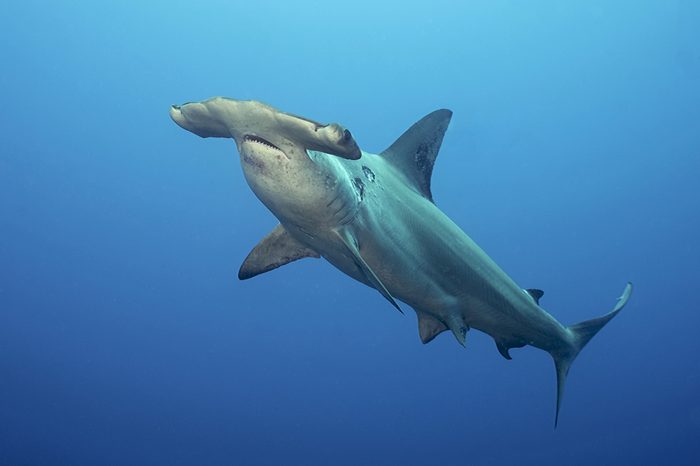
Sharks fill an important ecological niche as apex predators
Although we feel bad for the young seals, the role sharks play in picking off the weakest members of their prey group can be important. “Sharks play a key role in ocean ecosystems,” says Whitney. “Removing them may cause a domino effect that can impact other species, even down to corals and algae.” Without sharks thinning their ranks, large predatory fish can become more abundant; when they start eating more of the fish that typically graze on algae, then the algae might proliferate and out-compete the coral for sunlight.
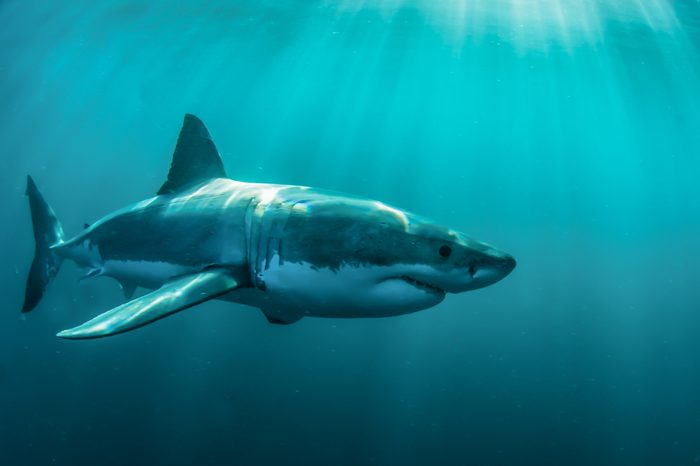
Great white sharks are travelers
Over the past couple of decades, researchers have been trying to figure out where white sharks go and why. Tagging programs have shown that West Coast sharks travel north and south between California and Mexico and spend several months out in the middle of the Pacific, about halfway to Hawaii. East Coast sharks range from Newfoundland to the Gulf of Mexico. In 2005, a great white named Nicole swam from Africa to Australia and back in nine months, for a total of more than 12,000 miles.
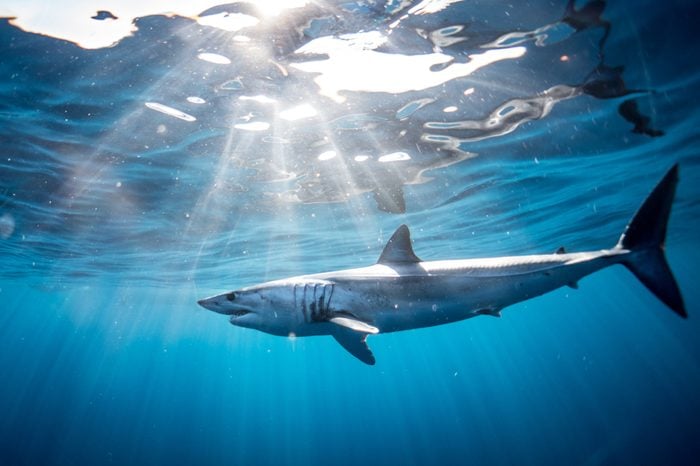
Some sharks can never stop swimming
It’s not true of all species, but great white, tiger and mako sharks all need to keep moving in order to breathe. Whitney has used tags with accelerometers—”the same technology found in your Fitbit or iPhone”—to track the way sharks move underwater, and he’s found that great whites do something he hadn’t expected: They repeatedly swim from the surface down to the sea floor and then back up. “We can tell from the tags that when they’re going down, they just glide, and then when they’re going up they have to beat their tails pretty strongly to get to the surface,” he says.
It might be a way of conserving energy, like when birds glide, and they might even be sleeping on the way down. “They have to swim constantly from the moment they’re born until they die, so this might be a way to take a break once in a while.”
Sources:
- World Wildlife Fund Canada: “7 Fascinating Facts About Sharks”
- The Smithsonian Institution: “Sharks”
- Oceana: “Tasselled Wobbegong”
- Scientific American: “The Shark’s Electric Sense”
- Natural History Museum: “Shark evolution: a 450 million year timeline”
- Shark Trust: “Tonic Immobility”
- Florida Museum: “The ISAF 2021 shark attack report”
- Nick Whitney, PhD, senior scientist at the Anderson Cabot Center for Ocean Life at the New England Aquarium
- The New York Times: “A Surfer Is Killed, and Australia Asks: Do More Sharks Need to Die?”
- The Conversation: “How shark spotting can help reduce attacks. A Cape Town case study”
- The Conversation: “Has Queensland really saved lives by killing thousands of sharks?”
- The Sydney Morning Herald: “‘Senseless’: Nets catch 480 animals including many protected species”
- Live Science: “Facts About Whale Sharks”
- Save Our Seas Foundation: “Features of the great white shark population of Seal Island, False Bay”
- ResearchGate: “The Ecological Role of Sharks on Coral Reefs”
- Slate: “New Camera Tag to Help Solve Great White Mystery”
- Phys Org: “Study: Great white sharks are swimming farther and deeper”
- Live Science: “Must Sharks Keep Swimming to Stay Alive?”